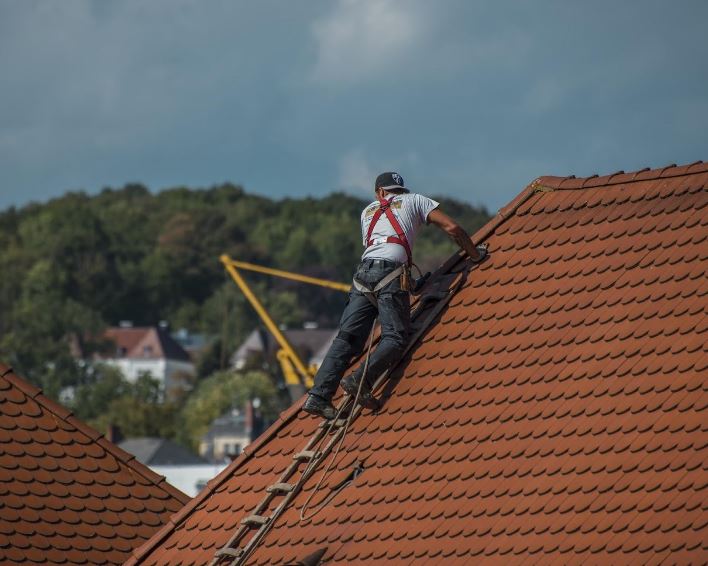Repairing Your Roof the Right Way: 6 Essential Facts Worth Knowing

A solid roof protects your home from the elements, and understanding the ins and outs of repair can save you both time and money. With various roofing materials and local regulations, getting roofing repair right is no small task.
Be it a small leak or significant structural damage, knowing how to approach roof repairs will help homeowners feel more confident in their decisions. Here are six essential facts that every homeowner should understand as they consider addressing their roofing needs.
Understanding Common Roofing Issues
Roofing problems can manifest in numerous ways, but some of the most common issues include leaks, broken shingles, and asphalt shingle granule loss. Leaks often occur around flashing, chimneys, or in valleys where two slopes meet. Not addressing minor leaks promptly can lead to significant water damage over time, affecting not just the roof but the entire interior structure as well. Broken or missing shingles expose the underlayment to moisture and can quickly end up in more serious problems.
Homeowners should routinely inspect their roofs for signs of failure, especially after storms. Identifying and addressing these common issues early can prevent a minor repair from turning into an extensive and costly overhaul.
Assessing DIY vs. Professional Repairs
Deciding between a DIY fix or hiring a professional is not as easy as it sounds. Simple repairs, like replacing a few shingles, might seem doable for handy homeowners. However, some repairs, especially those involving structural elements or intricate roofing systems, usually require professional skills. Climbing on the roof presents dangers; falls account for thousands of injuries each year.
Inexperienced repairs can result in leaks or even structural inadequacies. Know that for roof repairs and other complex issues, it is typically best to hire an experienced professional who understands local laws and building codes. Evaluating your skills against the complexity of the repair can guide your decision, weighing both time and cost considerations.
Evaluating Your Roofing Material
Common materials like asphalt shingles, metal, clay tiles, and wood shakes each have unique repair requirements. Asphalt shingles are more accessible for most homeowners and usually require just replacement shingles and basic tools for minor repairs. Conversely, metal roofs can be more complicated due to their seams and fasteners, urging homeowners to consider professional help for diagnosing and repairing leaks. Clay tiles are aesthetically pleasing but can be brittle, necessitating careful handling to avoid breaking. Always consult local building codes as they may dictate specific materials or practices in your area, ensuring the repair is compliant and safe.
Signs That Indicate It’s Time for Repairs
Homeowners should be aware of key signs indicating that roof repairs are necessary. Staining on ceilings or walls may be a sign of water intrusion and should be inspected immediately. Curling shingles or blistered areas on the roof’s surface indicate that the shingles are reaching the end of their life or are severely damaged. Moss or mildew growth is also a red flag as it can hold moisture and accelerate decay as a result.
If significant granule loss is observed in gutters after heavy rain, that’s another signal that your shingles are deteriorating and may need replacing. Or, if the roof appears saggy or uneven, it could indicate a significant issue that requires immediate attention. Keeping a close eye on these indicators ensures that homeowners can address problems before they escalate.
The Importance of Permits and Regulations
Many municipalities require permits to perform roof repairs or replacements, especially if the project involves significant changes or structural work. Failing to obtain the proper permits can result in fines or additional fees and complicate future property transactions. Regulations can also dictate materials and installation methods to ensure the safety and durability of structures.
Every homeowner should familiarize themselves with these local laws before beginning any roofing work — compliance protects not just the homeowner but also the integrity of the neighborhood. Engaging a local contractor familiar with these laws may alleviate the pressure of navigating them independently.
Don’t Forget About Budgeting
Roofing repairs can vary widely in cost, and that’s why you want to create a realistic budget. Understanding the average costs associated with different types of repairs, materials, and labor will prepare homeowners for financial decisions. Material costs fluctuate, as do labor rates, depending on the complexity of the job.
While it may be tempting to opt for the lowest bidder, this could lead to subpar work and additional expenses down the line. Obtain several estimates from reputable contractors and assess their qualifications before making a decision. Always set aside a contingency fund, as unexpected issues often arise during roofing repairs, pushing the final cost beyond initial estimates. As a homeowner, you should educate yourself on potential costs for better financial planning and project satisfaction.

While roofing repairs can appear overwhelming, understanding these essential facts allows homeowners to approach repairs with clarity and confidence. Regular inspections, acknowledging the signs of damage, and recognizing when to consult professionals can mitigate future complications. By budgeting accordingly and staying informed about local regulations, homeowners can ensure that their roofing projects remain manageable and effective.







